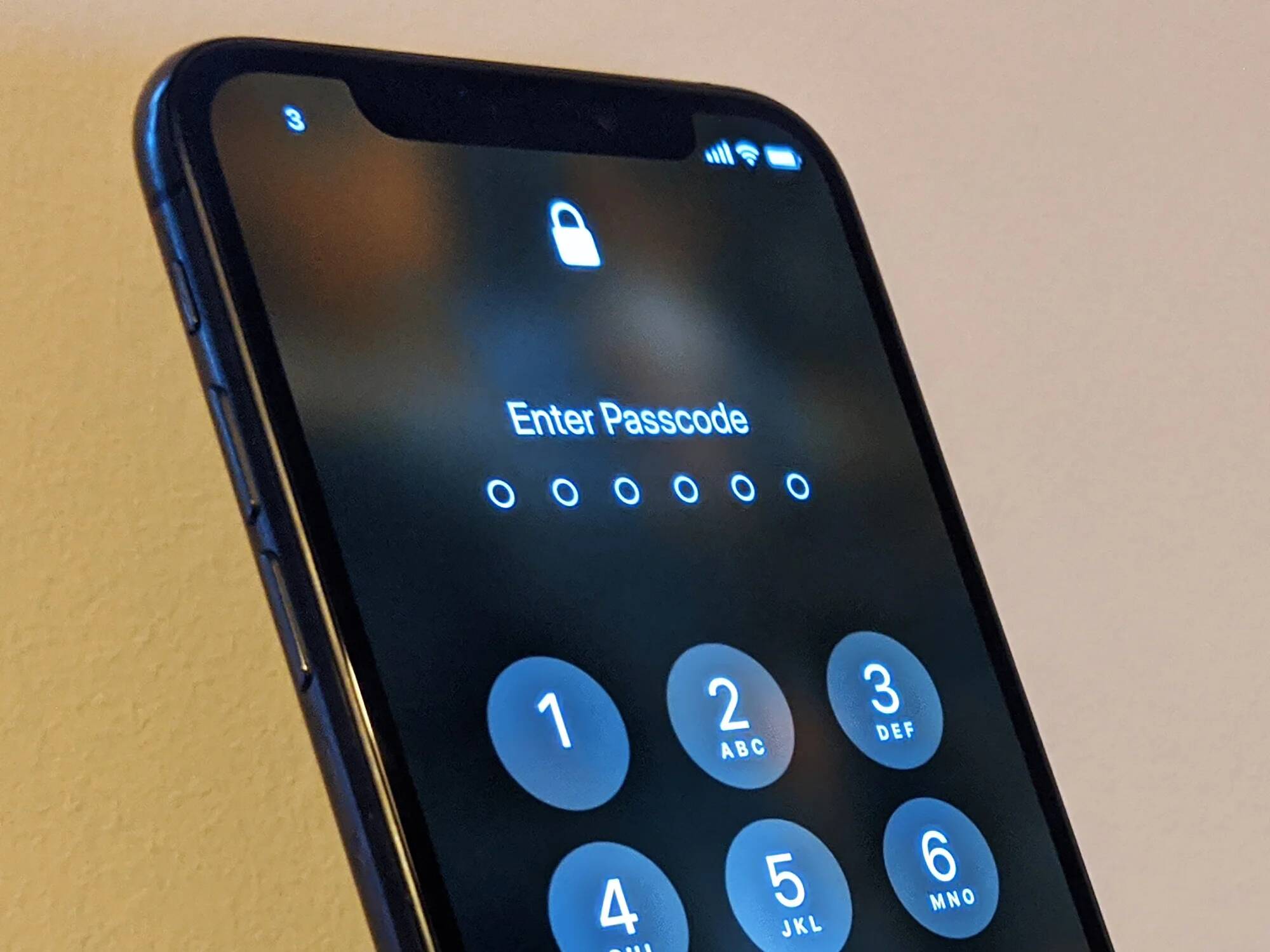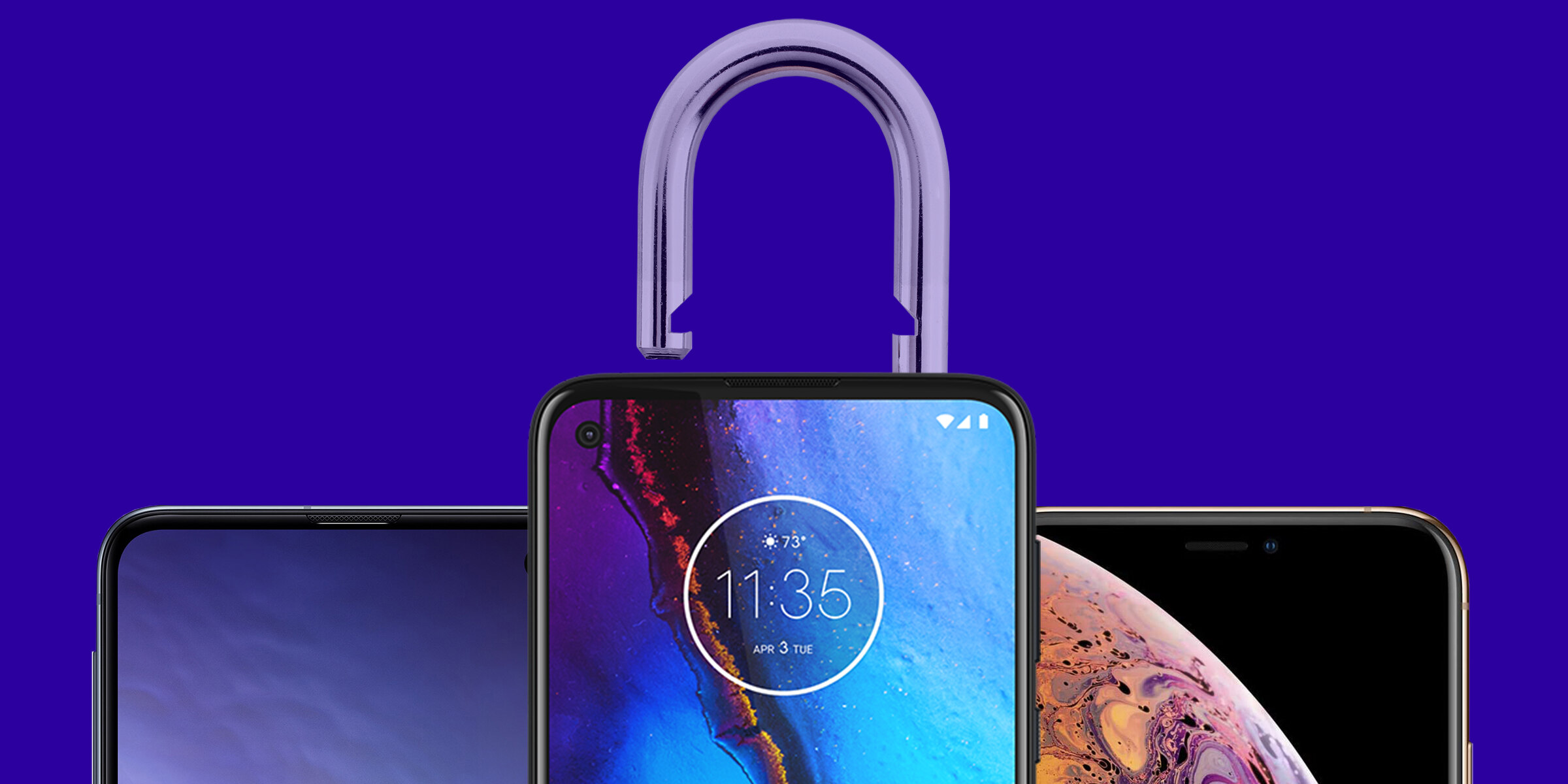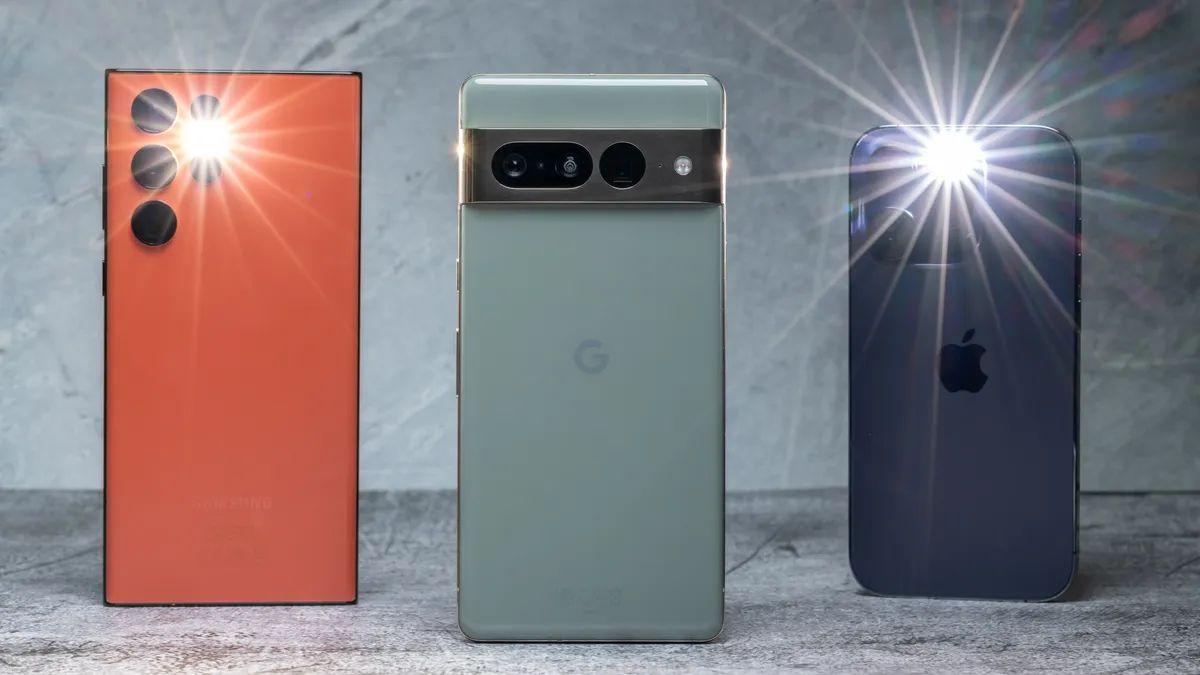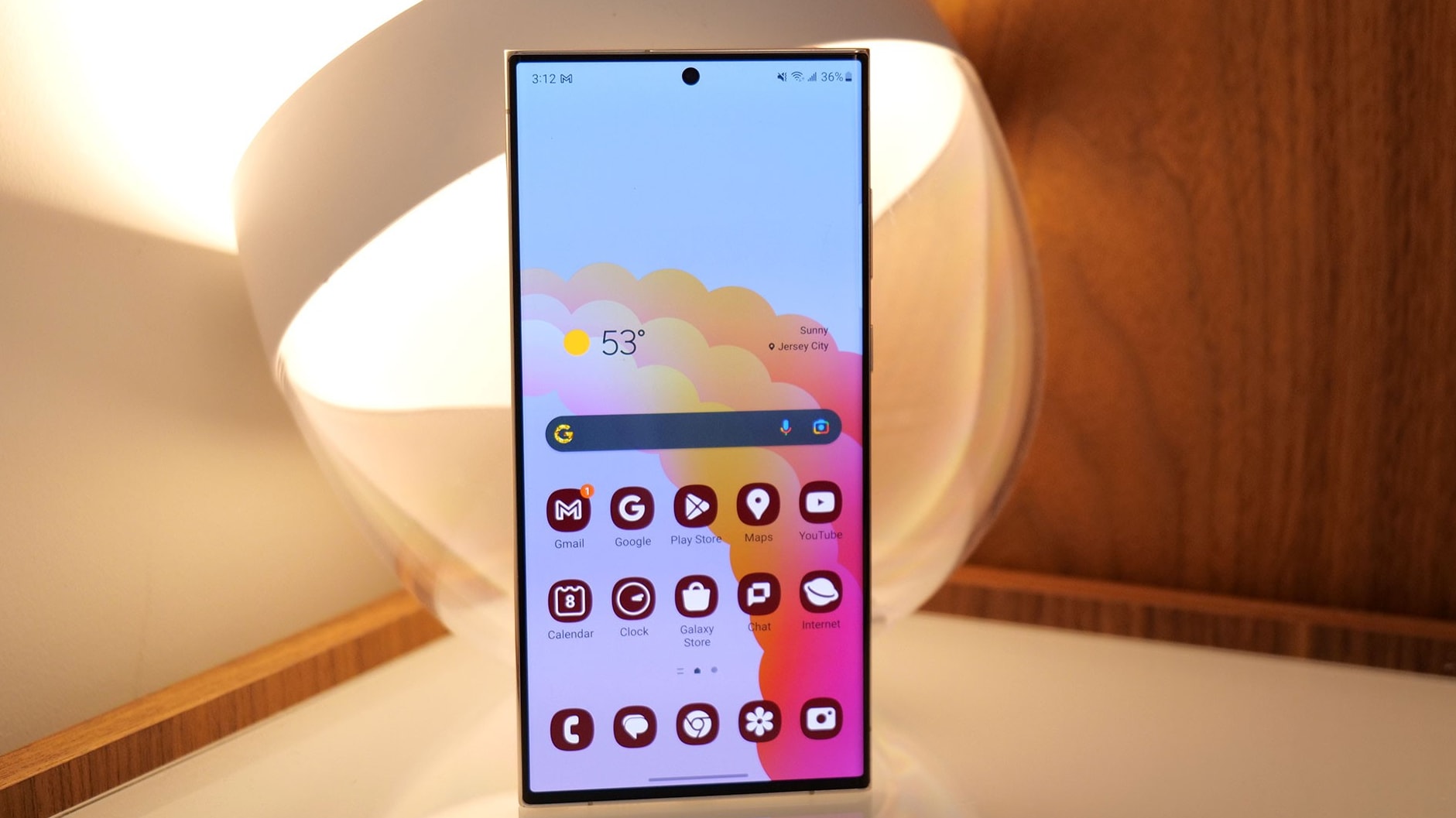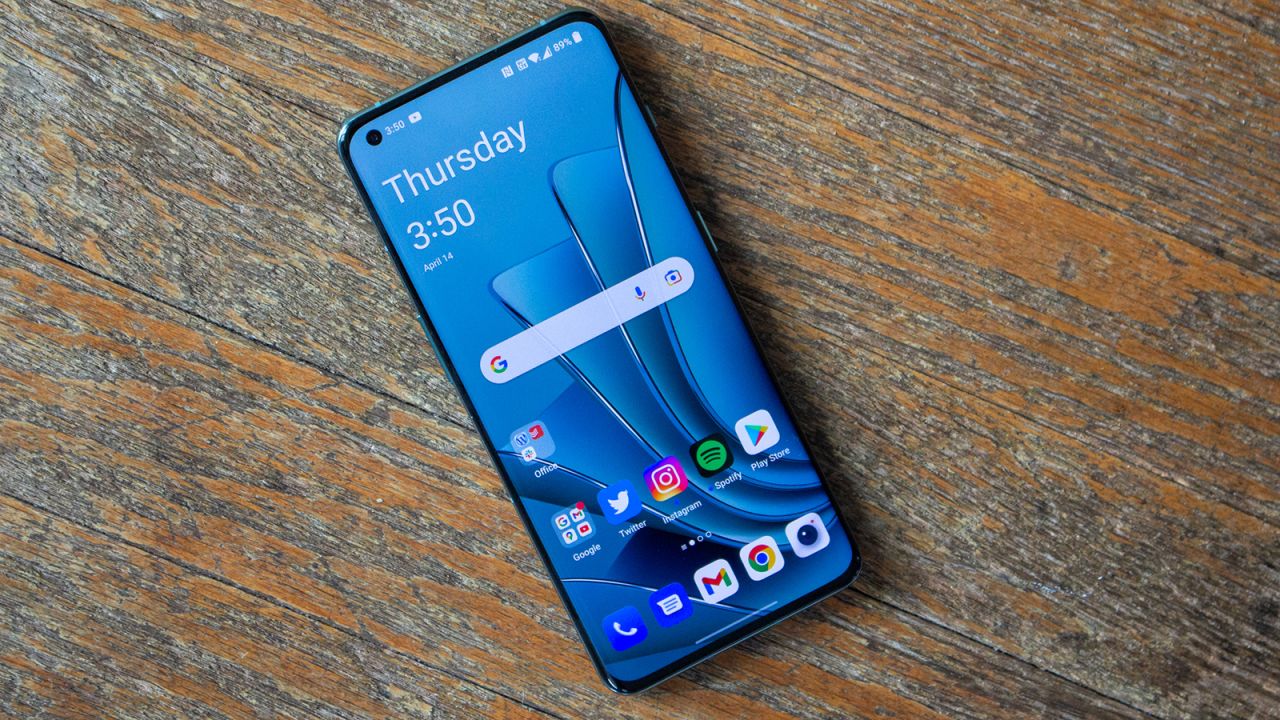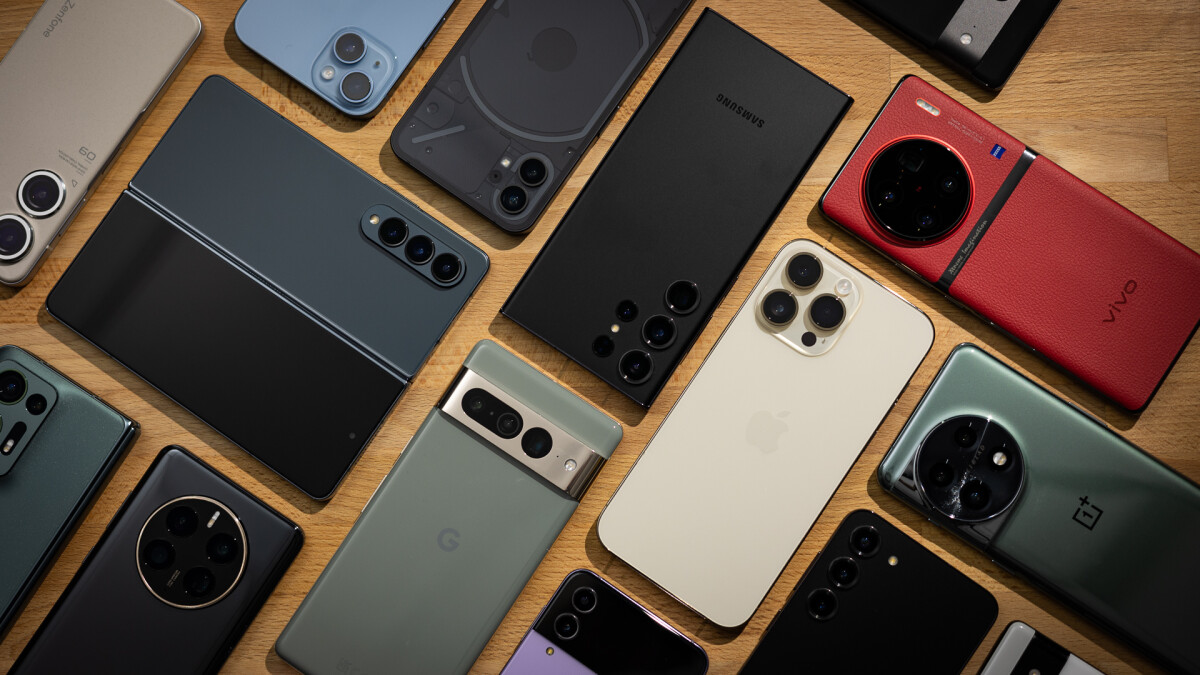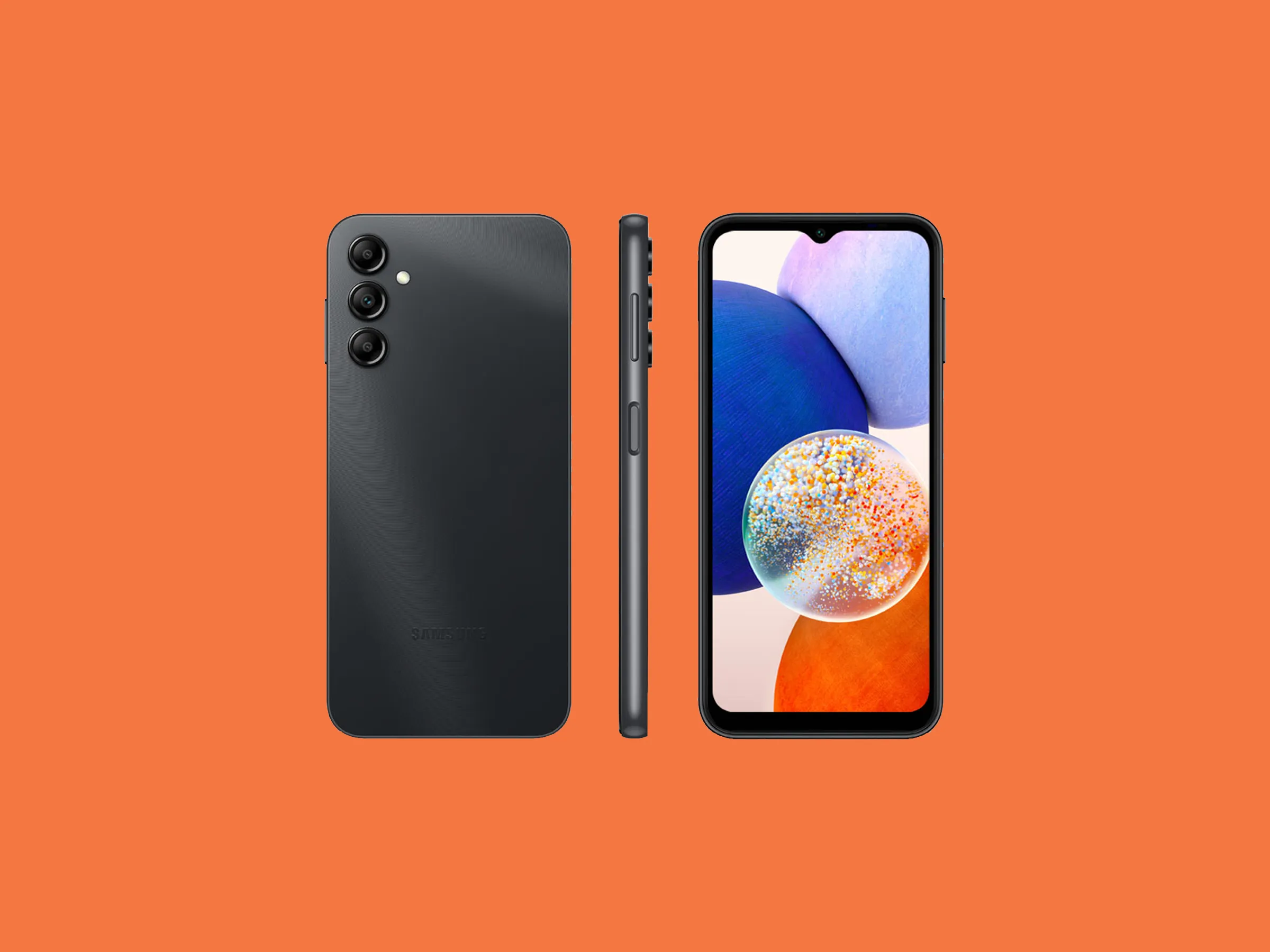Introduction
Unlocking your smartphone has become a popular topic for mobile phone users around the world. With the increasing demand for flexibility and freedom, many people are seeking ways to unlock their devices and use them with any carrier of their choice. But what does it mean to unlock a smartphone, and why would you need to do it?
Unlocking a smartphone refers to the process of removing the restrictions imposed by the mobile carrier on the device. By unlocking your smartphone, you gain the ability to use it with any compatible network provider, both domestically and internationally.
So why would you need to unlock your smartphone? There are a few key reasons. Firstly, if you decide to switch to a different carrier, unlocking your device allows you to make that transition seamlessly. Instead of needing to purchase a new phone, you can simply switch out the SIM card and continue using your current device. Secondly, if you frequently travel abroad, unlocking your smartphone enables you to use local SIM cards in the countries you visit, saving you from exorbitant roaming charges. Lastly, unlocking your smartphone can also increase its resale value, as potential buyers are more inclined to purchase a device that is not tied down to a specific carrier.
Now that we understand the importance of unlocking a smartphone, let’s explore the different methods available to achieve this.
Why Would You Need to Unlock Your Smartphone?
Unlocking your smartphone provides you with numerous benefits and opportunities that you may not have considered. While the concept of unlocking may seem unnecessary to some, it has become increasingly relevant in today’s mobile landscape. Here are some compelling reasons why you might need to unlock your smartphone:
- Switching Carriers: If you find yourself dissatisfied with your current mobile carrier’s service, unlocking your smartphone allows you the freedom to switch to a different network provider without having to purchase a new device. This gives you the flexibility to choose a carrier that offers better coverage, pricing, or customer support.
- International Travel: If you frequently travel internationally, unlocking your smartphone becomes a vital step. Instead of relying on expensive roaming services provided by your current carrier, you can use a local SIM card in the country you’re visiting. This not only saves you money but also allows you to enjoy better network coverage and data speeds.
- Resale Value: Unlocked smartphones have a higher resale value compared to locked devices. Potential buyers are more inclined to purchase an unlocked device as it provides them with the freedom to choose their preferred network. By unlocking your smartphone, you increase its marketability and can fetch a higher price when you decide to sell it.
- Flexibility and Freedom: Unlocking your smartphone gives you the freedom to customize your device as you see fit. You can install custom ROMs, access hidden features, and use third-party apps that are not available on locked devices. This flexibility allows you to personalize your smartphone experience and make the most out of your device’s capabilities.
- Service in Remote Areas: In some cases, certain carriers have limited coverage in remote or rural areas. If you live or work in such an area, unlocking your smartphone allows you to choose a carrier that provides better service in those regions. This ensures that you have reliable connectivity and can stay connected even in remote locations.
Unlocking your smartphone opens up a world of possibilities, giving you more control over your device and enhancing your overall mobile experience. Whether it’s the flexibility to switch carriers, the freedom to use local SIM cards while traveling, or the added value during resale, unlocking your smartphone is a decision that can greatly benefit you in various ways.
Different Methods to Unlock Your Smartphone
Unlocking your smartphone can be accomplished using a variety of methods. Each method has its own considerations, requirements, and potential outcomes. Let’s explore some of the different methods available to unlock your smartphone:
- Contacting Your Current Mobile Carrier: The first method to consider is contacting your current mobile carrier. In some cases, carriers are willing to unlock your smartphone upon request. However, this method can have certain prerequisites, such as fulfilling contractual obligations, paying off any outstanding balances, or completing a specific amount of time on your contract. It’s important to check with your carrier’s policies and procedures regarding unlocking before proceeding.
- Using an Unlock Code: Another method is using an unlock code. If your smartphone is compatible with this method, you can obtain an unlock code from a variety of sources such as online services, third-party companies, or even your carrier directly. Once you have the code, you can follow the instructions to enter it into your device and unlock it for use with other carriers.
- Unlocking through a Third-Party Service: If the above methods are not feasible or do not work for your device, you can consider using a third-party unlocking service. These services specialize in unlocking smartphones and can provide unlocking solutions for a wide range of devices. However, it’s important to do thorough research and choose a reputable and reliable service to ensure the safety and effectiveness of the unlocking process.
- Unlocking Your Smartphone Yourself (If it’s Legal): For tech-savvy individuals and certain models of smartphones, there may be methods available to unlock the device yourself. This typically involves advanced techniques such as rooting or jailbreaking your device. However, it’s important to note that not all smartphones can be unlocked in this manner, and attempting to do so may void your warranty or cause other adverse effects. Additionally, it’s crucial to ensure that the practice is legal within your jurisdiction.
When considering which method to use to unlock your smartphone, be sure to evaluate the requirements, limitations, and potential risks associated with each option. It’s important to choose a method that aligns with your specific device, carrier, and circumstances.
Unlocking your smartphone can provide you with the freedom to switch carriers, save money on roaming fees, customize your device, and increase its resale value. However, it’s crucial to proceed with caution and choose a method that is legal, reputable, and compatible with your smartphone.
Method 1: Contacting Your Current Mobile Carrier
Contacting your current mobile carrier is often the first method people consider when looking to unlock their smartphone. Many carriers have policies and procedures in place that allow customers to unlock their devices upon request. Here’s what you need to know about this method:
In order to unlock your smartphone through your current mobile carrier, there may be certain requirements and conditions you need to meet. These requirements can vary depending on the carrier and the specific terms of your contract. Some common factors to consider include:
- Contractual Obligations: Carriers typically require that you fulfill any contractual obligations before they will unlock your device. This may involve completing a minimum amount of time on your contract or paying off any outstanding balances.
- Eligibility Period: Some carriers have eligibility periods, which means you need to have been a customer for a certain duration before they will consider unlocking your smartphone. This is to ensure that customers are not taking advantage of the carrier’s services and leaving shortly after obtaining a subsidized device.
- Financial Obligations: It’s important to ensure that you have paid all fees, charges, and outstanding balances associated with your account. Unpaid dues can prevent your carrier from unlocking your device.
- IMEI Status: Carriers may also check the International Mobile Equipment Identity (IMEI) status of your smartphone. This is to ensure that the device has not been reported lost or stolen and is not currently under contract or financing.
To initiate the unlocking process, you will need to contact your carrier’s customer service department. They will guide you through the necessary steps and provide you with the requirements and instructions specific to your situation. It’s important to have your device’s IMEI number handy, as this will be required during the unlock request process.
While this method may seem convenient, it’s important to note that not all carriers are willing to unlock smartphones, especially if certain criteria are not met. Additionally, carriers may charge a fee for the unlock service or require you to visit a physical store for verification purposes.
Before proceeding with this method, it’s recommended to check your carrier’s policies and procedures regarding smartphone unlocking. You can often find this information on their website or by contacting customer support directly. By understanding the requirements and conditions involved, you can determine if this method is suitable for your specific situation.
Unlocking your smartphone through your current mobile carrier can be a straightforward process if you meet the necessary requirements. However, keep in mind that it may not always be the most accessible or expedient option. Exploring alternative methods may be necessary if your carrier cannot fulfill your unlocking request or if you are seeking a faster solution.
Method 2: Using an Unlock Code
Another method to unlock your smartphone is by using an unlock code. This method is commonly used for devices that are compatible with this approach. Here’s what you need to know about unlocking your smartphone using an unlock code:
1. Check device compatibility: Before proceeding, you need to ensure that your smartphone is compatible with this method. Some carriers and phone models may not be eligible for unlocking using an unlock code. Check with your carrier or do some research to confirm compatibility.
2. Obtain an unlock code: Once you have confirmed compatibility, you will need to obtain an unlock code. There are various sources for acquiring unlock codes, such as online services, third-party companies, or even your carrier directly. Some carriers may have specific instructions or requirements for obtaining an unlock code, so it’s important to check with them first.
3. Enter the unlock code: Once you have the unlock code, follow the instructions provided to enter it into your smartphone. This process may vary depending on your device’s make and model. The unlock code typically prompts a specific screen or menu where you can input the code. Once entered correctly, your smartphone should be successfully unlocked.
4. Verify the unlock: After entering the unlock code, it’s essential to confirm that your smartphone is indeed unlocked. To do this, try inserting a SIM card from a different carrier into your device. If the SIM card works and you can make calls, send messages, and access data, then your smartphone is successfully unlocked and ready for use with other carriers.
Important considerations: There are a few important factors to keep in mind when using an unlock code to unlock your smartphone. Firstly, ensure that you obtain the unlock code from a reputable and trustworthy source. This will help ensure the accuracy and legitimacy of the code. Secondly, some smartphones have a limited number of attempts to enter the unlock code correctly. Make sure to carefully follow the provided instructions to avoid permanently locking your device.
Using an unlock code can be a reliable and effective method to unlock your smartphone. It provides you with the flexibility to switch to different carriers and use your device with networks worldwide. However, it’s important to note that not all devices are compatible with this method. Before attempting to unlock your smartphone using an unlock code, it’s recommended to check compatibility and seek guidance from your carrier or a professional unlocking service.
Method 3: Unlocking through a Third-Party Service
Unlocking your smartphone through a third-party service is another method to consider if the previous options are not feasible or if you prefer a hassle-free solution. These services specialize in unlocking smartphones and provide an alternative approach to unlock your device. Here’s what you need to know about unlocking through a third-party service:
1. Research and choose a reputable service: Before proceeding with a third-party unlocking service, it’s crucial to do thorough research and choose a reputable and reliable provider. Look for reviews, testimonials, and customer feedback to ensure the legitimacy and credibility of the service.
2. Check compatibility: Ensure that the third-party service supports your specific smartphone model and carrier. Not all devices or carriers may be supported, so it’s important to verify compatibility before proceeding with the unlocking process.
3. Provide device information: When using a third-party service, you will typically need to provide certain information about your smartphone, such as its make, model, IMEI number, and carrier. This information is essential for the unlocking service to generate the unlock code or perform the necessary steps to unlock your device.
4. Follow the instructions: After providing the necessary information, you will receive instructions from the third-party service on how to proceed with the unlocking process. This may involve certain steps, such as entering specific codes or connecting your device to a computer for software modification.
5. Pay the unlocking fee: Most third-party unlocking services require payment for their services. The fee can vary depending on factors such as the complexity of the unlock, the device’s model, and the urgency of the unlock. Be sure to review the pricing details and payment options before proceeding.
6. Wait for the unlocking process: Once you have completed the necessary steps and paid the fee, the third-party service will initiate the unlocking process. The duration for the unlocking process can vary depending on the service provider and the specific device. In some cases, the unlock may be completed remotely, while in others, you may need to send your device to the service provider for manual unlocking.
Important considerations: When using a third-party unlocking service, it’s crucial to be cautious and choose a reputable provider. While most services are legitimate, there may be scammers or untrustworthy providers that can compromise your device’s security or fail to unlock your smartphone successfully.
Unlocking your smartphone through a third-party service can be a viable solution if other methods are not available or you prefer a reliable and convenient approach. However, it’s essential to do thorough research, check compatibility, and choose a reputable service to ensure a smooth and secure unlocking process.
Method 4: Unlocking Your Smartphone Yourself (If it’s Legal)
If you are a tech-savvy individual and your smartphone model allows it, you may consider unlocking your device yourself through advanced techniques such as rooting or jailbreaking. It’s important to note that not all smartphones can be unlocked in this manner, and it’s crucial to ensure that the practice is legal within your jurisdiction. Here’s what you need to know about unlocking your smartphone yourself:
1. Research and understand the process: Before attempting to unlock your smartphone yourself, it’s important to thoroughly research and understand the techniques involved. This includes learning about rooting (for Android devices) or jailbreaking (for iOS devices) and the potential risks and benefits associated with these procedures. There are numerous online resources, forums, and tutorials available that provide step-by-step instructions for specific smartphone models.
2. Backup your data: Unlocking your smartphone yourself may involve modifying its software, which can potentially lead to data loss or other complications. It’s essential to create a complete backup of your device’s data to avoid any potential loss or damage during the process.
3. Unlock your smartphone: Once you are knowledgeable and prepared, you can proceed with the unlocking process. This typically involves following specific instructions for your device model and software version. Keep in mind that the steps for rooting or jailbreaking can vary, so it’s crucial to follow the correct procedure for your specific smartphone.
4. Understand the risks and drawbacks: Unlocking your smartphone yourself comes with certain risks and drawbacks. Modifying the software can void your device’s warranty, and there is a possibility of bricking your device if the process is not done correctly. Additionally, by unlocking your smartphone through unofficial methods, you may lose access to certain features, updates, or support from the manufacturer or carrier.
5. Stay up to date: It’s important to stay informed about the latest updates and developments in the rooting or jailbreaking community. New methods and tools may become available that offer safer and more efficient ways to unlock your smartphone. Regularly check for software updates, new tutorials, and community forums to ensure you have the most reliable information and tools.
Important considerations: Unlocking your smartphone yourself is not recommended for novice users or those unfamiliar with the rooting or jailbreaking process. It requires a certain level of technical knowledge, and any mistakes can have significant consequences. Furthermore, it’s vital to understand the legal implications of unlocking your smartphone in your jurisdiction, as some countries have specific laws and regulations regarding these practices.
Unlocking your smartphone yourself can provide you with complete control over your device and the ability to customize it to your preferences. However, it’s crucial to weigh the risks, drawbacks, and legal considerations before attempting to unlock your smartphone using self-rooting or jailbreaking methods.
Things to Consider before Unlocking Your Smartphone
Before proceeding with unlocking your smartphone, there are several important factors to consider. Unlocking your device can offer various benefits, but it’s crucial to evaluate certain aspects and make an informed decision. Here are some things to consider before unlocking your smartphone:
- Carrier Policies: Understand your current carrier’s policies and procedures regarding smartphone unlocking. Some carriers may have specific guidelines, eligibility requirements, or fees associated with unlocking. Knowing these details can help you determine the best course of action.
- Compatibility: Check if your smartphone is compatible with the unlocking method you plan to use. Different methods may work for specific device models or software versions. Ensure that the method you choose supports your smartphone to avoid any complications or disappointment.
- Warranty and Support: Unlocking your smartphone, especially through unofficial methods, can void your device’s warranty. Consider whether the benefits of unlocking outweigh the loss of warranty and official support from the manufacturer or carrier. Keep in mind that any future issues with your device may not be covered under warranty.
- Legal Considerations: Research the legal implications of unlocking your smartphone in your jurisdiction. Some countries have specific laws and regulations governing unlocking practices. Make sure that unlocking your device is legal before proceeding, as unauthorized unlocking may result in penalties or other consequences.
- Third-Party Services: If you plan to use a third-party unlocking service, thoroughly research and choose a reputable provider. Read reviews, check customer feedback, and ensure that the service has a good track record. Be cautious of scammers or unreliable services that may compromise your device or personal information.
- Backup Data: Before unlocking your smartphone, it’s essential to back up all your important data. This will help prevent any potential loss or damage to your files during the unlocking process. Use cloud storage, external hard drives, or computer backups to secure your data.
- Future Usage: Consider your future usage plans for your unlocked smartphone. Will you be switching carriers, traveling internationally, or selling your device? Unlocking your smartphone provides flexibility, but ensure that these future plans align with the benefits of unlocking.
- Security: Unlocking your smartphone introduces some level of risk to your device’s security. Be cautious when using unofficial software modifications or rooting methods, as this may expose your device to potential vulnerabilities. Stay updated with security patches and use reputable sources for any modifications.
Remember to assess your unique situation and weigh the pros and cons before deciding to unlock your smartphone. Take into account factors such as carrier policies, compatibility, legal considerations, warranty implications, and the reputation of third-party services. By considering these aspects, you can make an informed decision that aligns with your needs and preferences.
Benefits of Unlocking Your Smartphone
Unlocking your smartphone can offer several significant benefits that enhance your mobile experience and provide you with more flexibility and freedom. Here are some of the key advantages of unlocking your smartphone:
- Carrier freedom: Unlocking your smartphone allows you to switch to any compatible carrier of your choice. You are not limited to the network provided by your original carrier. This gives you the freedom to choose a carrier that offers better coverage, pricing, or customer service, ensuring you have the best mobile experience.
- International travel: Unlocked smartphones are compatible with SIM cards from different carriers worldwide. When traveling internationally, you can simply purchase a local SIM card and enjoy local rates, eliminating the need for expensive roaming services. This allows you to stay connected at a more affordable price and have seamless communication wherever you go.
- Increased resale value: Unlocked smartphones have a higher resale value compared to locked devices. By unlocking your device, you expand its potential market, as potential buyers are not limited to a specific carrier. This can result in a higher selling price if you decide to upgrade or sell your smartphone in the future.
- Customization options: Unlocking your smartphone often opens up customization options that are not available on locked devices. You can install custom operating systems (ROMs), modify system settings, and access additional features and apps. This flexibility allows you to personalize your device to your preferences and optimize its performance.
- Flexible use of dual SIM functionality: Many smartphones today offer dual SIM functionality, allowing you to use two SIM cards simultaneously. Unlocking your device enables you to use different carriers for each SIM slot and take advantage of the cost savings and convenience of having two different network providers. This is particularly useful for individuals who have both personal and work phone numbers.
- Cost savings: Unlocking your smartphone can lead to significant cost savings over time. It eliminates the need to purchase a new device if you switch carriers, as you can simply use your unlocked smartphone with the new SIM card. Additionally, by using local SIM cards while traveling, you can avoid excessive roaming charges and enjoy more affordable communication services.
Overall, unlocking your smartphone provides you with the freedom to choose your carrier, save money, customize your device, and increase its resale value. Whether it’s the flexibility to switch carriers, the convenience of using local SIM cards abroad, or the ability to personalize your device, unlocking your smartphone unlocks a world of possibilities and enhances your mobile experience.
Risks of Unlocking Your Smartphone
While there are various benefits to unlocking your smartphone, it’s important to be aware of the potential risks that come with this process. Unlocking your device can have certain drawbacks and implications that should be considered before proceeding. Here are some of the key risks associated with unlocking your smartphone:
- Voiding warranty: Unlocking your smartphone using unofficial methods, such as rooting or jailbreaking, can void your device’s warranty. This means that any future issues or repairs might not be covered by the manufacturer or authorized service centers. It’s important to weigh the benefits of unlocking against the loss of warranty protection.
- Security vulnerabilities: Unlocking your smartphone can expose your device to potential security risks. Modifying the software or using unofficial apps can introduce vulnerabilities that could compromise the security of your personal data. It’s crucial to stay vigilant, keep your device updated, and only download apps and software from trusted sources.
- Incompatibility: While unlocking your smartphone offers the freedom to switch carriers, it’s important to note that not all devices are compatible with every network. Certain features or functionalities of your device may not work properly when used with certain carriers. It’s recommended to check compatibility before unlocking to avoid any potential compatibility issues.
- Unreliable unlocking services: Using unreliable or unauthorized third-party unlocking services can jeopardize the security and functionality of your smartphone. Scammers or untrustworthy services may compromise your device or misuse your personal information. It’s essential to thoroughly research and choose a reputable service provider to avoid any potential risks.
- Potential device bricking: Unsuccessful attempts at unlocking your smartphone through unofficial methods can result in device malfunctions or even “bricking” the device, rendering it unusable. This can occur if the unlocking process is not followed correctly or if incompatible software modifications are applied. It’s crucial to understand the risks involved and proceed with caution when attempting to unlock your smartphone yourself.
- Limited official support: Once your smartphone is unlocked, you may not receive official support or updates from the manufacturer or carrier. This can include software updates, security patches, or customer service for unlocked devices. It’s important to consider whether the benefits of unlocking outweigh the potential drawbacks of limited official support.
It’s essential to carefully evaluate the risks and benefits before deciding to unlock your smartphone. Consider your specific device, the unlock method, and the trustworthiness of the service you choose. By making an informed decision and taking necessary precautions, you can minimize the risks associated with unlocking your smartphone.
Conclusion
Unlocking your smartphone can be a beneficial decision, providing you with the freedom to choose your carrier, use local SIM cards while traveling, increase resale value, and customize your device. However, it’s important to carefully consider the various methods and factors involved before proceeding with the unlocking process.
Methods such as contacting your current mobile carrier, using an unlock code, utilizing third-party services, or unlocking your smartphone yourself all have their own considerations, requirements, and potential risks. Evaluating factors such as carrier policies, compatibility, legal implications, warranty, and security risks is crucial to make an informed decision.
While unlocking your smartphone offers numerous benefits, including carrier flexibility, cost savings, and personalization options, it’s important to be aware of the potential drawbacks. These can range from voiding your warranty and introducing security vulnerabilities to facing potential incompatibility issues or unreliable third-party services.
To ensure a seamless unlocking experience, it’s advisable to do thorough research, choose a reputable unlocking service, or consult with professionals who can guide you through the process. By weighing the risks and benefits, understanding the implications, and ensuring legality, you can make the best decision based on your specific needs and circumstances.
Remember, unlocking your smartphone is a personal choice and should align with your goals, preferences, and future usage plans. Whether you prioritize carrier flexibility, international travel, or customization options, be sure to consider both the advantages and disadvantages before unlocking your smartphone.
Unlocking your smartphone can open up a world of possibilities, enabling you to truly make the most of your mobile device. With careful consideration and informed decision-making, you can unlock the potential of your smartphone and enjoy the benefits that come with it.







